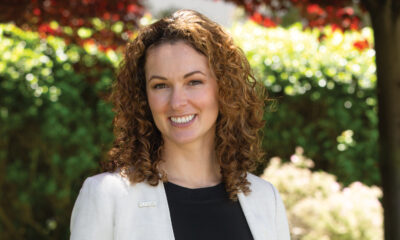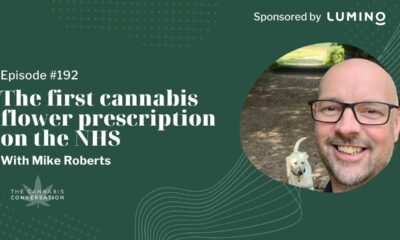NUMBERS NEVER LIE, as the saying goes. If true, then cannabis entrepreneurs can breathe a little easier… but just a little.
The cannabis industry is still growing. It’s not growing as fast as it once did; there are headwinds in more mature markets like Colorado and California. The lack of banking and federal reform continues to punch everyone in the face. Despite all of these sobering facts, there’s growth in new markets as more states and localities are embracing the exuberance of legal weed every day.
BDSA recently announced an update of its cannabis market forecast—a five-year rolling global forecast by country, state, province, channel and category. The report projects global cannabis sales to grow from $30 billion in 2021 to $55 billion in 2026, a compound annual growth rate (CAGR) of almost 13 percent. In the United States, cannabis sales will grow from $25 billion in 2021 to $40 billion in 2026, representing a projected 73 percent share of total global cannabis sales three years from now. Further, legal cannabis sales in the U.S. will reach $27 billion by the end of 2022, an increase of 6 percent over 2021 sales of $25 billion, per BDSA.
Entering a New Era
“The ‘hockey stick’ trend of sales growth seen in the early years of legal cannabis has passed,” says Roy Bingham, CEO of BDSA. “Economic and regulatory headwinds are exerting pressure on legal cannabis markets. Still, our updated forecast predicts that steady gains in developing U.S. markets will continue to drive single-digit annual growth in total U.S. legal sales in 2022, with continued growth prospects out to 2026.”
While sales have plateaued and even fallen in some of the most mature markets such as California, Colorado, Washington and Oregon, driven by declines in retail prices and a challenging macroeconomic situation, newer markets continue to see brisk sales growth. I wanted to drill down on the BDSA report with Bingham so that we all can make more informed decisions as we try to grow our businesses or start new ones.
Our conversation clearly demonstrates the need for members of our industry to cooperate so that the external adversaries holding everyone back can be outsmarted. The industry must invest more in public policy if it’s to improve access, lower taxes, streamline regulations and licensing, and become more profitable by welcoming and competing with illicit operators. After all, the data doesn’t lie.
Advertisement
Talking Through the Numbers
Here’s my conversation with Bingham, in which we discuss the nuts-and-bolts lessons we can take from BDSA’s market research.
ANDREW DEANGELO: What public policy mistakes are constraining mature market growth like California and the West?
ROY BINGHAM: One issue constraining mature markets (particularly in the West) is excessively high tax rates. States like California, due to their history of being epicenters for cultivation going back decades, as well as loose regulations during the medical era, have especially strong illicit/gray markets. High cultivation and excise taxes make it difficult for the regulated industry to compete on price point with the illicit market.
Another issue constraining the growth of the legal market in some of these Western states—California in particular—is limited retail availability.
Regulations regarding the legalization of cannabis usually allow municipalities to make their own determinations about whether to allow adult-use cannabis businesses. In California, this led to huge swaths of the state opting to not allow storefront cannabis retail.
While more and more municipalities have shifted course to allow adult-use retail, California still has only about four retailers for every 100,000 adults—less than the young Arizona adult-use market, and roughly one-third of the per-capita retailer count in the young Michigan adult-use market.
AD: How much, on a national average percentage basis, do you think the legal market is leaving on the table to the underground market?
RB: In 2022, BDSA Market Forecast estimates that the illicit market will make up roughly 55 percent of total cannabis dollar sales across U.S. markets with active adult-use or medical sales.
AD: What mistakes are companies or leaders making in mature markets that are constrained?
RB: Perhaps the biggest mistake being made in mature markets is the current race to the bottom regarding prices at retail. Low price is a big driver of product choice at retail according to BDSA Consumer Insights.
But other factors, such as high THC content, taste and flavor, and brand recognition also are major influencers of what consumers purchase at retail.
AD: How long do you think it will take for New York and New Jersey to have oversupply issues like the mature markets?
RB: Oversupply has been a chronic issue in legal cannabis markets across the country, but the issue has historically been exacerbated by an excess of cultivation licensees. Oregon, which put no cap on the number of cultivation licenses issued, had an oversupply problem just a few years after legalization and by mid-2017, licensed Oregon growers were producing roughly twice as much cannabis as the estimated consumer demand within the state.
Advertisement
It’s likely that New York and New Jersey will reach a point of market saturation and eventual oversupply, but the timeline for such events depends on the growth rate of consumer penetration, cultivation license caps, limits on cultivation per licensee, and the timeline of licensing.
AD: What public policy or industry initiatives can be undertaken that will create one large market instead of two smaller markets: one licensed, one not?
RB: Lowering taxes in the most constrained markets, increasing retail availability—including delivery and curbside pickup—and streamlining the compliance process for licensing are all moves that could limit the impact of the illicit market and bring more illicit operators into the regulated supply chain.
Many industry groups have been lobbying for tax and banking reform at the federal level for years. The passage of the SAFE Banking ACT and reform to IRS 280e would have major implications to the profitability of legal cannabis businesses.
Note: This column was originally published on Forbes.com.

 Cover Features11 months ago
Cover Features11 months ago
 Cover Features11 months ago
Cover Features11 months ago
 Legal9 months ago
Legal9 months ago
 Branding10 months ago
Branding10 months ago
 Products9 months ago
Products9 months ago
 Branding12 months ago
Branding12 months ago
 Business12 months ago
Business12 months ago
 Podcasts11 months ago
Podcasts11 months ago












